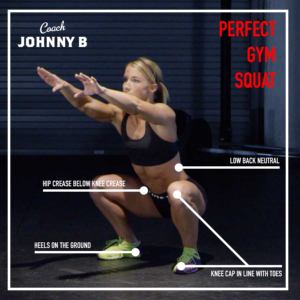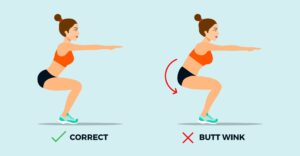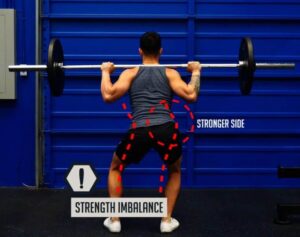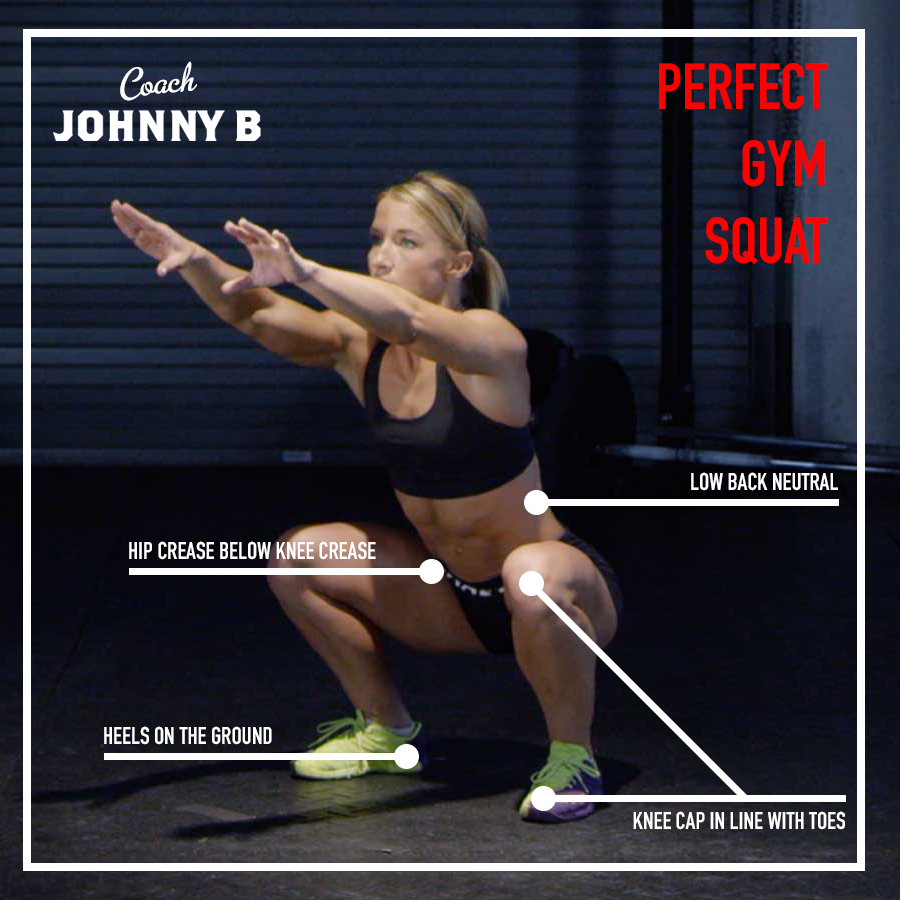What Your Squat Says About Your Body
Performing a proper squat requires significant mobility throughout the body. Still, the ability to move all the involved joints through their available ranges of motion does not necessarily ensure a perfect squat. The squat also requires considerable motor control, meaning that you must utilize your functional mobility through proper muscle activation efficiently. While mobility is often blamed for poor movement, motor control is just as important.
The goal of this week’s email is to help you understand what a perfect squat looks like. If your squat is not perfect, this email will serve as a self-diagnosis to understand what kind of squat flaw you have and what you need to do to fix it.

Here is What A Perfect Gym Squat Looks Like
- Feet will remain flat on the floor and not rotate out
- The middle of your knee cap should be lined up with your middle toe
- Your low back (lumbar spine) should be neutral
- Knees should go forward as hips push back. You should do this until your hip crease gets lower than your knee crease.
Note: I say what a perfect gym squat looks like because different purposes require a different squat. You should not use the same squat to hit a PR as you would to poop in the woods on a camping trip.
Here are six common issues you may have encountered and what is causing it

#1. Feet Rotating Out
If your feet rotate as you squat, it’s most likely a mobility issue with your ankles/lateral tibial glide OR tight calves/weak hip abductors (TFL, Glute Med/Min, Sartorius, Piriformis)

#2. Heels Off The Ground
If you get to the bottom of the squat and can’t keep your heels on the ground, it’s most likely a mobility issue with your ankles/lateral tibial glide. You need to work on some ankle mobility.

#3. Knees Caving In
There are usually only two reasons your knees cave in when you squat 1. Weak glutes 2. Poor ankle mobility. 90% of the time, it’s weak glutes. If this is, you need a glute strength program.

#4. Butt Wink
If you look like a pooping dog when you squat below parallel, we have some issues!!! FIRST, DO NOT SQUAT WITH LOAD BELOW PARALLEL IF THIS HAPPENS. The sheer force it places on your lumbar facet joints is highly sketchy. Ok, now that we have that out of the way, here are the four reasons this happens.
a. You overextend your low back when you start the squat. You stick your butt out like your milkshake is calling all the boys to the yard when you begin the squat. It immediately means you will run out of space in the pelvis and will wink.
b. You have crappy ankle mobility
c. You have crappy hip
d. mobility d. You do not have reasonable motor control of your hip/low back.
I can orate for days on how to assess this, but the moral of the story is if you have a butt wink squat, you need to seek professional help.

#5. Good Morning Squat
This is also called a stripper squat. It is when your hips elevate faster than your shoulders coming out of the bottom of the squat. The cause of this: YOUR QUADS ARE WEAK, and you need to make them stronger.

#6. Hip Shift during Squat
If your hips slide during a squat, it generally means you have a side-to-side strength asymmetry. We fix this by finding the specific weak muscles and making them equally strong. A hip shift could also mean a deeper orthopedic issue in rare cases, and you need to see a surgeon.
So what’s your takeaway? Watch yourself squat with and without load. If you aren’t perfect, figure out why and fix it. Doing so will keep your bones and soft tissue healthy, allow you to perform better, AND keep you from needing help off the toilette later in life

